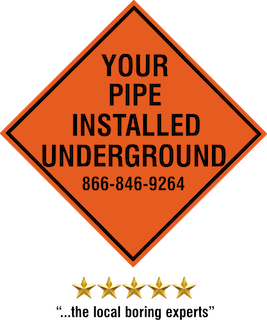Tunnel Boring
Utah Directional Drilling - Tunnel Boring Contractor
Tunnel Boring Machines (TBMs) and associated methods are utilized in various applications, including jack and bore, horizontal auger boring, hand tunneling, stormwater, drainage, sewer installations, and projects involving roads, railroads, and municipalities, as an alternative to open-cut excavation. Below is a breakdown of how these methods are applied in each context:
Utah Directional Drilling - Tunnel Boring Companies
1. Jack and Bore
- Application: Jack and bore, or auger boring, uses TBM-like machines for creating small-to-medium diameter bores for installing pipelines or conduits beneath obstacles like roads or railways.
- Process:
- A casing pipe is jacked forward while a rotating auger removes soil.
- This is an economical solution for crossing highways, railways, or waterways without disruption.
- TBM Role: Miniature TBMs or auger boring machines create precision bores in cohesive soils or sands.
2. Horizontal Auger Boring
- Application: Horizontal auger boring employs similar methods to jack and bore but focuses on larger diameter installations for long distances.
- Process:
- A boring machine drills a horizontal shaft while removing soil through an auger.
- A casing pipe is installed simultaneously or after the bore.
- TBM Role: Precision auger systems ensure proper grade and alignment under existing infrastructure like roads or rivers.
3. Hand Tunneling
- Application: Hand tunneling, often used in constrained or sensitive environments, involves manual excavation with support systems, complemented by small-scale TBM technology.
- Process:
- Workers excavate material by hand, sometimes with pneumatic tools, and install liner plates or support systems.
- For longer or more uniform tunnels, micro-TBMs automate and enhance excavation.
- TBM Role: Micro-TBMs may replace or augment hand tunneling in areas requiring minimal environmental disruption.
4. Stormwater and Drainage
- Application: TBMs are widely used for creating underground stormwater and drainage systems to mitigate flooding and manage runoff in urban areas.
- Process:
- TBMs construct underground channels, replacing open-cut trenches that disrupt urban landscapes.
- Tunnels are lined with precast concrete or steel for durability.
- Advantages:
- No disruption to surface structures.
- Increased efficiency and durability for long-term water management.
5. Sewer Installations
- Application: TBMs create underground tunnels for sewer systems, especially in dense urban areas or beneath existing infrastructure.
- Process:
- Large-diameter TBMs allow for man-entry sewer tunnels.
- Precision and alignment are critical to maintain gravity flow systems.
- Advantages:
- Reduced impact on traffic and businesses.
- Long-term durability with corrosion-resistant linings.
6. Roads and Railroads
- Application: TBMs enable tunneling under active roads or railroads without interrupting surface activities.
- Process:
- A shielded TBM creates tunnels that allow for the installation of utilities or passageways beneath the surface.
- Slurry or earth pressure balance TBMs manage soil stability in variable geologies.
- Advantages:
- Avoids expensive surface repairs.
- Ensures uninterrupted operation of critical infrastructure.
7. Municipal Applications
- Application: Municipal projects, such as utility tunnels or transit systems, benefit from TBMs in urban planning.
- Process:
- TBMs create space for water, gas, and power lines.
- In urban transit, large-diameter TBMs enable the construction of underground metro lines.
- Advantages:
- Supports city growth with minimal disruption to existing communities.
- Environmentally friendly and efficient.
Advantages of TBM Use Across Applications
- Reduced Surface Disruption: Minimizes traffic congestion, environmental impact, and utility interruption.
- Precision and Safety: TBMs provide accurate alignment and safer excavation compared to manual or open-cut methods.
- Suitability for Various Soil Conditions: Advanced TBMs can handle soft soils, mixed grounds, and even hard rock.
- Longer Tunnel Lengths: Enables longer crossings under rivers, highways, or urban areas without intermediate access shafts.
Limitations and Considerations
- Cost: Higher initial costs compared to simpler methods like auger boring.
- Size and Accessibility: TBM deployment may be impractical in extremely confined or short projects.
- Geotechnical Conditions: Success depends on proper evaluation of soil conditions.
Utah Directional Drilling - Tunnel Boring Near Me
Future Innovations
The integration of AI, robotics, and machine learning into TBMs is further enhancing their precision, cost-effectiveness, and applicability, making them increasingly viable across industries, including jack and bore and related tunneling methods.


